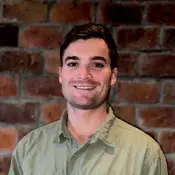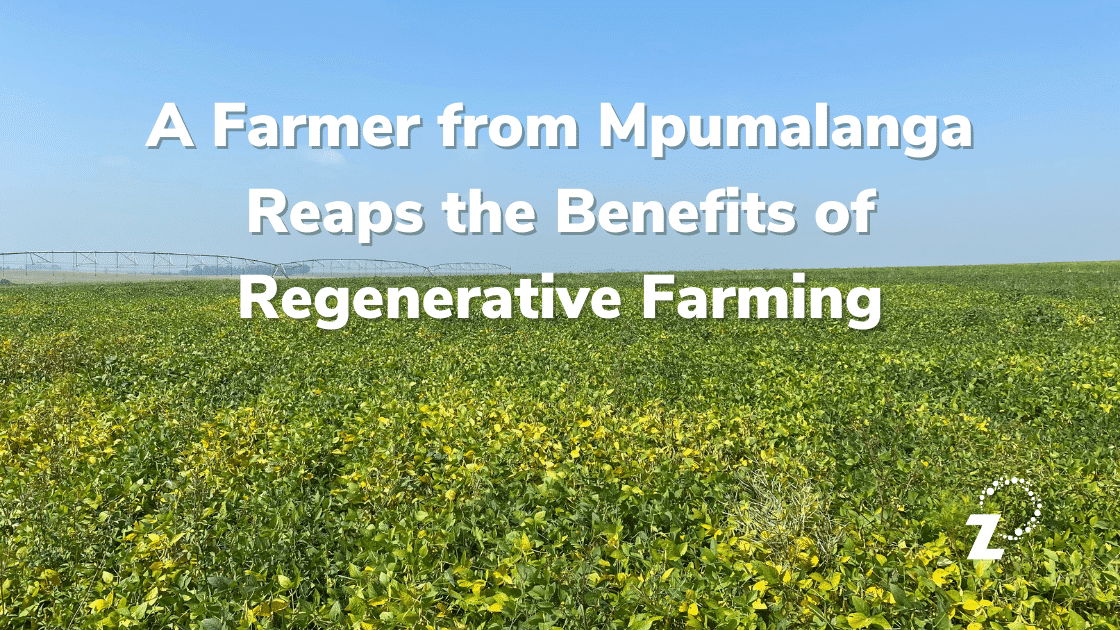Hendrik Odendaal, a commercial farmer in Standerton, Mpumalanga, is on the road to more regenerative farming methods. His main crops are maize and soybeans. We recently got the chance to chat with Hendrik about his regenerative farming journey.
Hendrik started farming in 2005 using conventional agricultural practices. Without even knowing it was a regenerative practice at the time, he started using the manure from his broiler houses on low-yielding fields. He then developed the process by composting the manure.
“I heard about no-till practices, which caught my attention and interest. I bought my first no-till planter in 2007, and slowly transformed all hectares by 2012. The no-till concept worked well on heavy clay soils; however, to improve soil structure and soil life, we needed to do more.”
In 2013, Hendrik started cover cropping by planting oats after harvesting soybeans. He also began grazing the land with cattle.
“As my interest in soil health increased, I started some self-studies on regenerative agriculture. I introduced multi-species cover crops with plant diversity as the main objective. I also implemented intensive grazing on the cover crops and the corn stover to ensure a good distribution of cattle manure.”
All regeneration journeys start in the soil
“I was always curious about how I could improve soil biology and reduce chemical fertiliser. A fellow farmer introduced me to the Soil Food Web by Dr Elaine Ingham and Johnson-Su’s (JS) bioreactor systems.”
After learning more, Hendrik commissioned a worm farm to provide worms for the bioreactors. Then, in 2020, he stopped using preventative insecticides, and would only apply pesticide products after scouting proved it would be necessary. He completely stopped using fungicides. By the end of 2021, Hendrik completed the foundational course, which completely changed his understanding of soil and its functions.
Hendrik’s current practices consist of:
- Inoculating seed with Johnson-Su’s compost
- Using compost extract in farrow
- Applying bio-stimulants such as PopUp and Real Cal
- Applying compost tea on the first leaves and flowers to appear
- Reducing chemical fertiliser to further facilitate improvements in soil health
The start of real results
Hendrik says that although his growing environment is not yet 100% optimal, it has improved significantly over the years with the no-till and regenerative practices. For example, during the wet season, his combine did not get stuck once as a result of the soil quality. He was able to continue operations as normal three days after three inches of rain, something his neighbouring conventional farmers were not able to do.
Hendrik says: “Compared to neighbouring commercial farms, we have had no dust storms or fields badly damaged by heavy rains. I also noted further improvement in the increase in the earthworm population and soil fauna.”
Another benefit of regenerative farming practices and reduced amounts of chemical fertilisers is that Hendrik now has lower input costs. Although his yields have decreased somewhat as his farm undergoes regenerative transformation, his net income is still in line with previous years.
Although the transition to regenerative farming cannot happen overnight, Hendrik’s patient and proactive approach will pay off over time to ensure long-term productivity, profitability and ecosystem biodiversity.
Looking to a fully regenerative future
Hendrik’s long-term goal for the future of the farm involves full-scale regenerative farming operations, including:
- Incorporating pasture chickens
- Bee farming
- Ultra high-density grazing on natural plains
- Increased diversity of cash crops
- Planting and harvesting mixed crops after harvest
- Generally farming with nature, not against it
Hendrik also plans to experiment with new techniques, such as using worm castings from the worm farm in extracts and teas, using very little to zero chemical fertiliser, producing a bio-complete compost (as per Dr Elaine Ingham’s specifications), and further improving soil health by increasing fungal to bacteria ratio.
Hendrik’s education and inspiration
Hendrik names the following farmers, researchers and experts as those who have guided his ideas and decisions about the way he farms:
- Gabe Brown
- Dr Jill Clipperton
- Elaine Ingham
- Hannes Botha
- Dr Christine Jones
- Ray Archuleta
- Dr David Johnson
- John Kempf
- Nicole Masters
- Rick Clark
- David Brand
Hendrik’s partners in regenerative production
Hendrik has been working with Herman Enslin from realIPM, our distributors and a leading biological control company, since 2020. He values Herman’s input and experience in stimulating soil biology. They share a mutual interest and passion for soil health.
Hendrik uses significant volumes of Zylem products in his crop management programmes, particularly Pop Up, SeaBrixTM and Micros Z. As pioneers of regenerative agricultural practices and products in South Africa, realIPM and Zylem are proud to help Hendrik continue along his admirable journey towards sustainability and regeneration.

About the Author: Alex Platt
Alex is Business Development Manager at Zylem. He’s inspired by the potential of regenerative farming and takes a special interest in the technology and products that are moving agriculture in a more sustainable direction.

